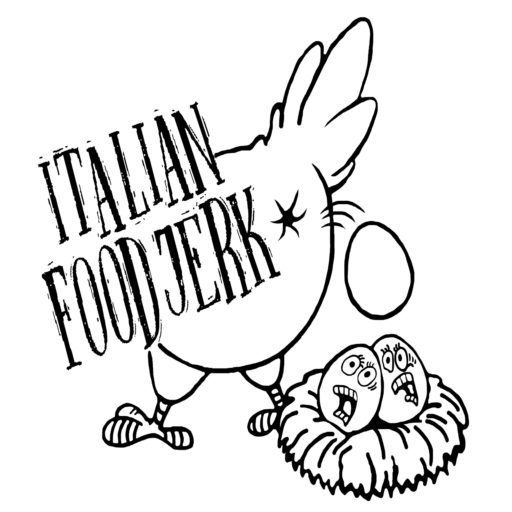“You don’t have Alfredo on the menu?? What kind of Italian are you??”
………………………………………………………………………………………..
………………………………………………………………………………………..
I promise you I am not an easily irritable guy, but the first time I heard the above dual question you could see me fuming with anger from the inside.
My instinct delivered three plausible answers in a matter of seconds:
- A REAL ONE!!!!!
- I am sorry, what kind of Italian are YOU???
- How do I say this without hurting your feelings? ….. Alfredo is just a first name in Italy.
The latter one won; I looked at the interviewer right in the eye and placed my hand on his shoulder virtually screaming “Listen to me carefully”.
I will never forget the look on his face, a melting pot of surprise, disbelief, affliction and sadness reminiscent of the feeling you had the day you found out that Santa does not exist.
I, on the other hand, thought for a moment that he was just misspelling “Cacio e Pepe”, a widely known Roman dish, completely oblivious of king Alfredo’s stardom.
The astonishing reality is that the authentic Italian’s nightmare (the almighty “Fettuccine Alfredo”) was invented in Rome in 1908, when Alfredo Di Lelio, owner and chef of Alfredo Ristorante in Rome, Via della Scrofa, had to fulfil his wife’s desire of a light but nutrient meal after a difficult pregnancy.

He came up with the idea of mixing a thin egg noodle with a high caloric sauce made of butter and parmesan.
It sounds like curing diabetes with sugar packets if you ask me, but according to Wikipedia these are the facts.
His wife enjoyed the dish so much she insisted to make it a regular menu item.
During the years, many versions of the original recipe were invented. In the restaurant where I used to work, we would melt the butter with gorgonzola cheese, fire in some white wine before pouring heavy cream, salt, pepper and parmesan cheese.
I discovered to my astonishment the tendency of using heavy cream on most Italian dishes.
Cream makes everything taste better.
In Italy we have the best and most flavorful ingredients in the world, so why would we need cream?
Lord have mercy on the poor fella that once dared to ask for “Seafood spaghetti with Alfredo sauce”.
If you are an authentic Italian reading this, you probably just got nauseous.
The reaction look that appeared on my face scared the poor fella to death, so I promptly turned into all smiles, patted him on the back and calmly explained that in Abruzzo, homicide and mixing seafood with cream (or cheese) are both considered felonies.
I learned to tolerate and accept a few profanities over the years, but seafood and cream together is never acceptable.
Never.
Never Ever.
And never will be.
I did learn to tolerate and even smile amusingly at the king of Italian American dishes, at least in the original version, although it still shocks me how a recipe that contemplates overcooked pasta is thought to be Italian.
It’s like thinking that pork chop is an Arabic tradition.
During a recent visit to the restaurant Alfredo Alla Scrofa in Rome, our lovely waiter confirmed that in the original recipe the pasta was purposely overcooked to make it easier for the sick woman to eat it.

That is why the dish rapidly faded in Italy,
This was another perspective-changing moment for me: I realized the existence of a third culture, not Italian nor American, simply Italian-American.
Whether they spent some time in Italy or have a great great grandfather that moved from Italy to United States, Italian-Americans introduce themselves as Italians.
It was literally an epiphany, thanks to the worst food nightmare of an authentic Italian: the Fettuccine Alfredo.
As an Italian I identify myself with Spaghetti Al Pomodoro (basically garlic, tomato sauce and fresh basil), certainly not with Fettuccine Alfredo.
The Italian-American individual identifies himself with Fettuccine Alfredo.
It is all clear now.
I discovered an exciting new world of dishes and recipes, some remotely related to specific areas of Italy (like Stromboli), others blossomed from the interesting combination of American lifestyle and Italian heritage (such as Chicken Parmesan).
I became more and more interested about this unfamiliar but interesting culture, and another eye-opening moment occurred upon watching The Godfather movie in its original language.
I knew every line by hearth in Italian, but in English it felt like watching a new movie for the first time.
There are words, sentences, slangs, way of saying and jokes that are extremely difficult to translate into another language without altering its meaning, and not having to do so helped me tremendously in understanding a different culture.
Even though I still do not fully comprehend your conception, the reason of your success and you are never featured in my food list, thank you Fettuccine Alfredo for opening up my mind to the fascinating world of Italian-American culture.


Recent Comments